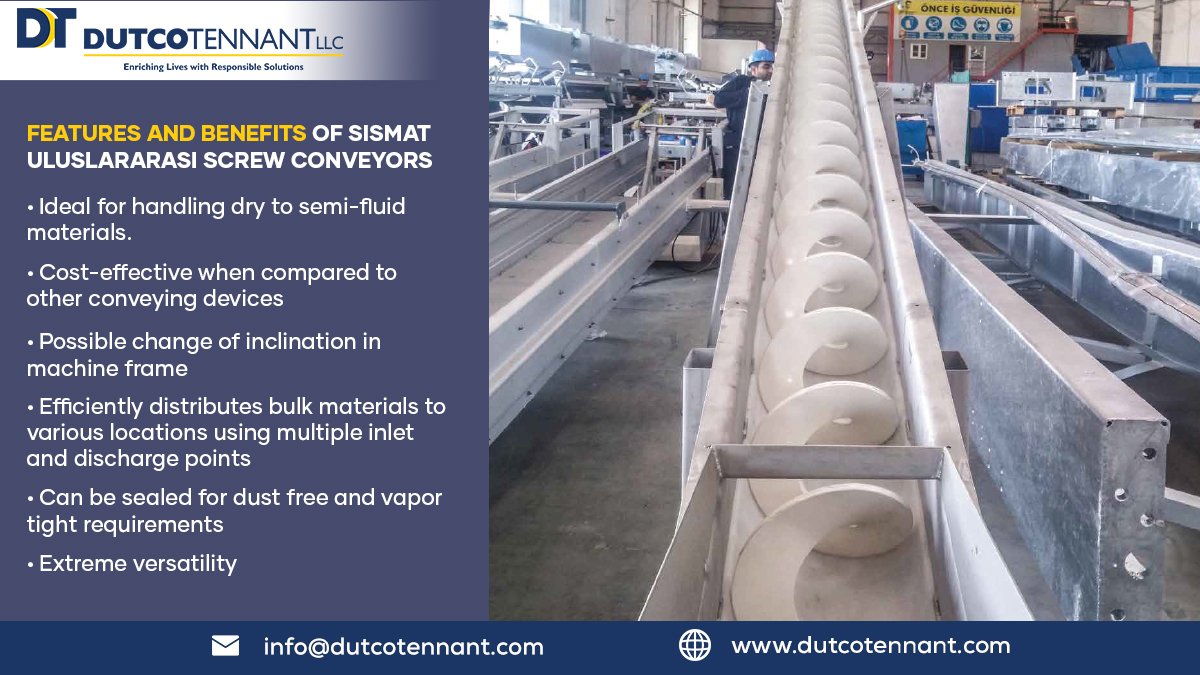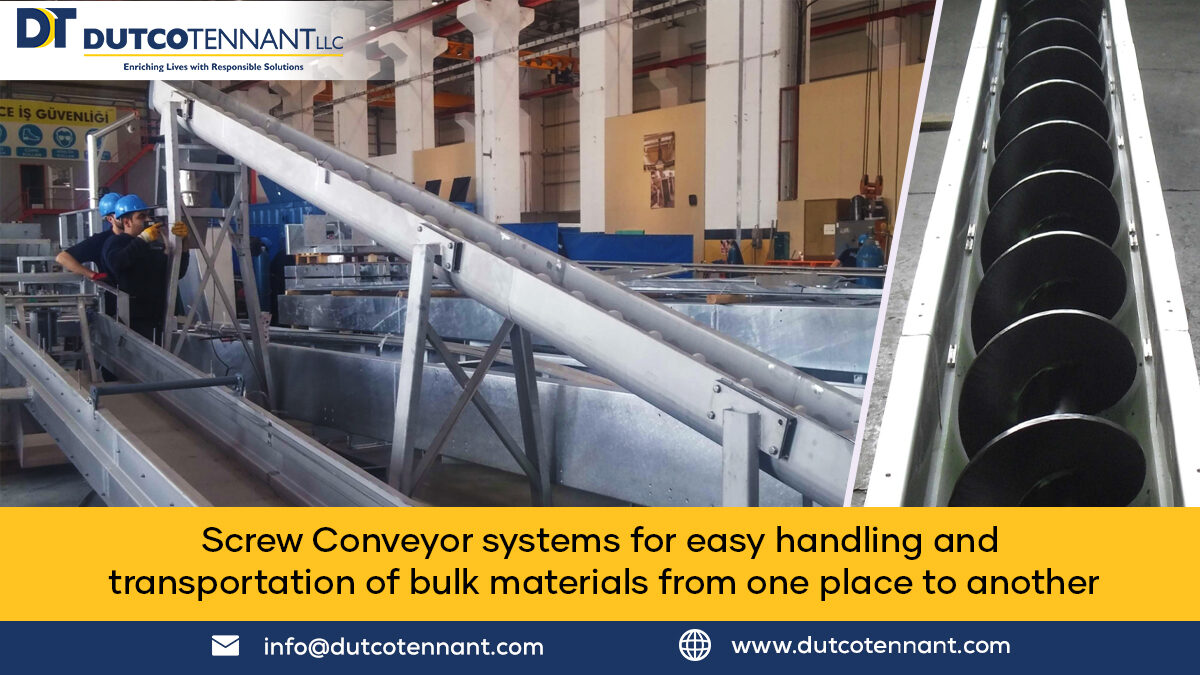The use of screw conveyors has been one of the oldest methods for the purpose of conveying materials from one place to another. In fact, the original design development can be dated back to over two thousand years. Over the centuries it has gone through drastic evolution and today they are used popularly in material handling processing.
With the implementation of modern technology, screw conveyors have become more efficient and economical. They have been utilized significantly for moving bulk material in different sectors such as construction, wastewater treatment plants, etc.
In this post, we go through varied important aspects of screw conveyors. Keep on reading till the end to find out all things essential about them.
Screw Conveyors in Wastewater Treatment Plants
Screw conveyors are part of the system elements in water and wastewater treatment plants. They help in carrying screened material, dewatered sludge, grit and other materials that are about to be disposed of.
Manual handling and transfer of these materials is not possible especially when they are produced in bulk. The wastewater conveyors ease the process of moving them to the right area where they are either treated further or simply discarded for disposal.

Benefits of Screw Conveyor
With their use in the suitable application, operators can get several benefits. Some of them are –
- Easy to adapt anywhere even in congested areas due to their overall compact design.
- Can also be utilized for controlling the material flow in processing operations which are based on accurate batching.
- Can also be utilized as agitator or mixer for blending fluid or dry materials (as per need). In many wastewater treatment plants, they are used for providing coagulant or crystallization action or maintaining solutions in suspension.
- Versatile as they can be employed in either horizontal, vertical or inclined positions as per the system requirements.
- They can be jacketed for serving the purpose of cooler or drier by running cold or hot water via the jacket.
- They can be sealed for preventing any escape of fumes or dust from the inside of the conveyor or keep them away from entering into the conveyor from the outside.
Different Types of Screw Conveyors
There are different types of screw conveyors available each having a distinct mechanism. Some of them are –
Screw Conveyors with Shaft
These types of screw conveyors are fabricated by a screw with a central shaft that is joined directly to the bearing from one side and to the drive unit from the other side. They are ideal for systems that require transportation of solid and semi-solid materials.
Screw conveyors with shafts are capable of moving a wide variety of materials from bins or hoppers constantly while maintaining controlled rate of flow. With the implementation of one or more tapered or variable pitch screws allows conveying the material at the required rate.
Shaftless Screw Conveyors
A shaftless screw conveyor is built by a shaftless screw placed on a polyethylene coating inside of a trough, with inlet hopper and outlet chutes. This type of screw conveyor is in applications where the size of particles are large and there is no requirement for hanger bearings due to lack of center pipe.
Bulk materials that are discharged from filter presses, centrifuges or mixers can easily be transferred with the use of shaftless screw conveyors. Since this type of screw conveyor does not have a shaft the transportation of sticky materials can be performed conveniently which can be otherwise difficult in a shaft screw conveyor type.
Other than these there are other types of screw conveyors available such as horizontal screw conveyor, inclined screw conveyor and vertical screw conveyor.
Selection of The Right Screw Conveyor
For the right choice of a screw conveyor, there are some primary elements that need to be considered. The type and condition of the material that requires handling is one of the first things that must be taken into account when selecting a screw conveyor.
Consideration of material type and its condition also includes maximum particle size and if the information is available then the specific bulk density of the material that needs to be conveyed must also be determined.
Next factor that requires consideration is the quantity of transported material that must be either expressed in tons or pounds per hour. Another factor is the distance from and to which the material shall be conveyed.
Conclusion
The use of screw conveyors are seen in many applications. They are versatile and can also be configured, integrated with other systems easily to amplify their functions. For instance, screw conveyors with compactor are a equipment available containing a screw conveyor and a compaction zone at its end. This offers a simple, effective and low-cost solution for the transportation, dewatering and compaction of sludge, screenings and other process materials.
If you are in need of assistance for finding quality screw conveyors then get in touch with the expert suppliers Dutco Tennant LLC now.


